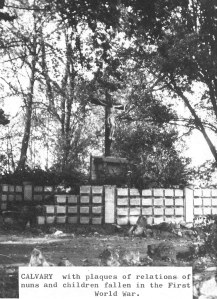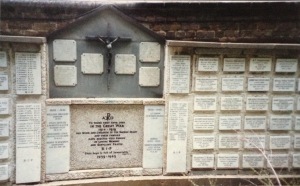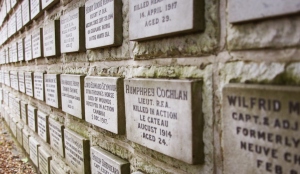The Digby Stuart College campus, University of Roehampton, was, until 1947, the site of a Community and school for the Society of the Sacred Heart. In 1883 the nuns built their Calvary on the West side of the grounds, near the boundary fence. It became the ideal location for a War Memorial to all the relatives of the nuns and pupils of the convent killed in the war. Documents in the Societies archives record that the Memorial was dedicated on 24 May 1918 by the Revered W Roche SJ.
Initially for the fallen of the WWI the memorial commemorates 1 from the Boer War, 275 from WWI, 11 from WWII and 1 from the Korean War.
There is no set pattern for the inscriptions; families were left free to compose their own. Officers and other ranks were generally separated, but not always. The plaques are marble with lead letters attached to a Portland stone background.
In 1972 the Memorial had to be moved to make room for the expansion of Digby Stuart College. Initially J. Whitehead & Sons Ltd, Kennington, London were engaged to carry out the work but then there were delays, for various reasons, and in October 1973 the completion of the Memorial was given over to a Mr Baker (there are no noted details of who he was) – a handwritten note states, ‘Finished by Mr Baker in June 1974’. Additional work was carried out in 1980.
In its current location it measures 1.9 metres high by 11.3 metres wide and in 2000 it was described as ‘a magnificent war memorial, absolutely unique’ by a representative of The National Inventory of War Memorials, Imperial War Museum.
This year, the University in collaboration with the Society’s archive,s have undertaken to trace relatives of those honoured on the Memorial in order to find the stories of those fallen so that they won’t be forgotten. It is hoped to that these accounts will be published in 2018 to mark the centenary of the Memorial.
For more information please contact Gilly King, History and Heritage Advisor, University of Roehampton gilly.king@roehampton.ac.uk



